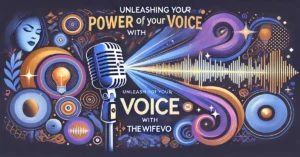In the world of poetry and songwriting, the phrase “Rhyme without reason ideas” might evoke images of delightful absurdity and playful creativity. But what exactly does it mean to rhyme without reason, and how can you harness this quirky concept to inject some whimsy into your work? Whether you’re a poet, a songwriter, or just someone who enjoys the playful side of language, this article will explore how to craft rhymes that are charmingly nonsensical yet irresistibly engaging.
What are Rhyme Without Reason Ideas?
Understanding the Concept
Rhyme without reason ideas are all about creating rhymes that delight through their randomness rather than their logical connections. It’s the art of letting go of conventional structures and allowing your imagination to guide you. Think of it as the linguistic equivalent of throwing a splash of paint on a canvas and seeing what delightful shapes emerge.
The Charm of Nonsense
The charm of nonsense rhymes lies in their ability to surprise and entertain. They can make us laugh, ponder, or simply appreciate the whimsical nature of language. Classic examples include the playful verses of Lewis Carroll’s “Jabberwocky” or the delightful nonsense of Dr. Seuss’s books. These rhymes captivate us not through reason but through their sheer unpredictability and imaginative flair.
Crafting Your Own Rhyme Without Reason Idea
Embrace the Absurd
To create effective rhymes without reason idea, start by embracing absurdity. Allow your mind to wander freely, and don’t be afraid to let your imagination run wild. For example, consider the phrase “weight lift and Taylor Swift.” On the surface, it might seem nonsensical, but it opens doors to creative possibilities that defy conventional logic.
Example:
- “Weight lift and Taylor Swift,
- A waffle’s dance, a unicorn’s gift.”
Play with Language
Experiment with words that sound similar but have little to no logical connection. Play with puns, homophones, and unexpected word pairings. The goal is to find combinations that sound pleasing and amusing, even if they don’t make conventional sense.
Example:
- “Bouncing boots and sugar canes,
- Whispering clouds and candy trains.”
Use Rhyming Patterns
Explore different rhyming patterns to add a layer of complexity to your nonsense rhymes. You can use AABB, ABAB, or even AAAA patterns. The key is to maintain a rhythm that complements the whimsical nature of your words.
Example:
- “Giraffes in hats with dandy stripes,
- Floating cakes and dancing pipes.”
Incorporate Imagery
Even in the realm of nonsense, vivid imagery can make your rhymes more engaging. Paint colorful pictures with your words to create a sense of wonder and amusement. This will help your audience visualize the playful scenarios you’re describing.
Example:
- “Moonlit muffins on a rainbow ride,
- Hopping hedgehogs in a jelly slide.”
Why Rhyme Without Reason Ideas Work
The Power of Playfulness
Rhyme without reason ideas thrives on playfulness. It allows both the writer and the reader to escape from the constraints of logic and explore the joyous possibilities of language. This playful approach can evoke emotions ranging from joy to curiosity, making it a powerful tool for creative expression.
Engaging the Imagination
By bypassing logical constraints, nonsense rhymes engage the imagination in unique ways. They encourage readers and listeners to think outside the box and embrace the fantastical. This engagement can lead to a deeper appreciation of language and creativity.
Creating Memorable Content
Nonsense rhymes often stick in our minds because of their unexpectedness and charm. They create memorable moments through their surprising combinations and whimsical nature. This makes them effective for poems, songs, or even marketing jingles that aim to capture attention and leave a lasting impression.
Examples of Rhyme Without Reason Ideas in Popular Culture
Literary Nonsense
Literary nonsense has a long tradition in literature. Lewis Carroll’s “Jabberwocky” is a classic example, featuring invented words and fantastical creatures that defy conventional understanding. Its charm lies in its rhythmic playfulness and imaginative language.
Children’s Literature
Dr. Seuss is another master of rhyme without reason. His books, such as “Green Eggs and Ham” and “The Cat in the Hat,” use whimsical rhymes and playful language to engage young readers and stimulate their imaginations. The nonsensical elements make these stories both entertaining and memorable.
Music and Songwriting
In music, artists often use playful and nonsensical rhymes to create catchy and memorable lyrics. Songs like “I Am the Walrus” by The Beatles or “Bohemian Rhapsody” by Queen incorporate whimsical elements that captivate listeners and add a layer of intrigue to their music.
Tips for Using Rhyme Without Reason Effectively
Know Your Audience
While rhyme without reason can be delightful, it’s essential to consider your audience. Tailor your whimsical rhymes to suit the preferences and expectations of your readers or listeners. For example, children’s literature can embrace more overt nonsense, while adult audiences might appreciate subtler forms of whimsy.
Balance Nonsense with Structure
Even in the realm of nonsense, some structure can enhance the impact of your rhymes. Balancing playful language with a coherent rhythm or pattern can make your work more enjoyable and easier to follow.
Experiment and Have Fun
The essence of rhyme without reason is experimentation and fun. Don’t be afraid to try different combinations, patterns, and themes. Embrace the joy of creating something unique and let your creativity lead the way.
Conclusion
Rhyme without reason ideas offers a delightful departure from conventional structures, allowing creativity to shine through whimsical and imaginative language. By embracing absurdity, playing with words, and incorporating vivid imagery, you can craft rhymes that captivate and amuse. Whether you’re writing poetry, crafting song lyrics, or simply enjoying the playful side of language, exploring rhyme without reason can lead to delightful discoveries and unforgettable expressions. So, let your imagination run wild, and see where the nonsensical rhymes take you!
FAQs
1. What are rhyme without reason ideas?
Rhyme without reason ideas involve creating playful, nonsensical rhymes that entertain through their randomness rather than logical connections.
2. Why are nonsense rhymes appealing?
Nonsense rhymes charm audiences with their unpredictability, engaging imagination, and whimsical use of language.
3. How can I create rhyme without reason?
Start by embracing absurdity, experimenting with word pairings, and using vivid imagery to craft unexpected and engaging rhymes.
4. Where are rhyme without reason ideas commonly used?
They appear in literature, children’s books (e.g., Dr. Seuss), poetry, and music, creating memorable and imaginative content.
5. What makes rhyme without reason effective?
Its playfulness, vivid imagery, and rhythmic charm engage audiences and make content more memorable and enjoyable.
6. How can I balance nonsense and structure in my rhymes?
Maintain a rhythmic pattern, like AABB or ABAB, while letting your imagination guide playful word choices and imagery.








